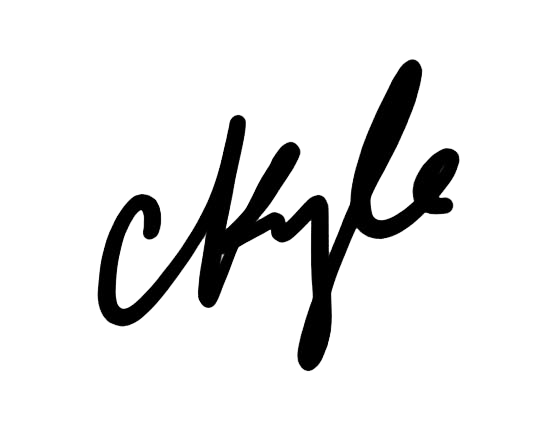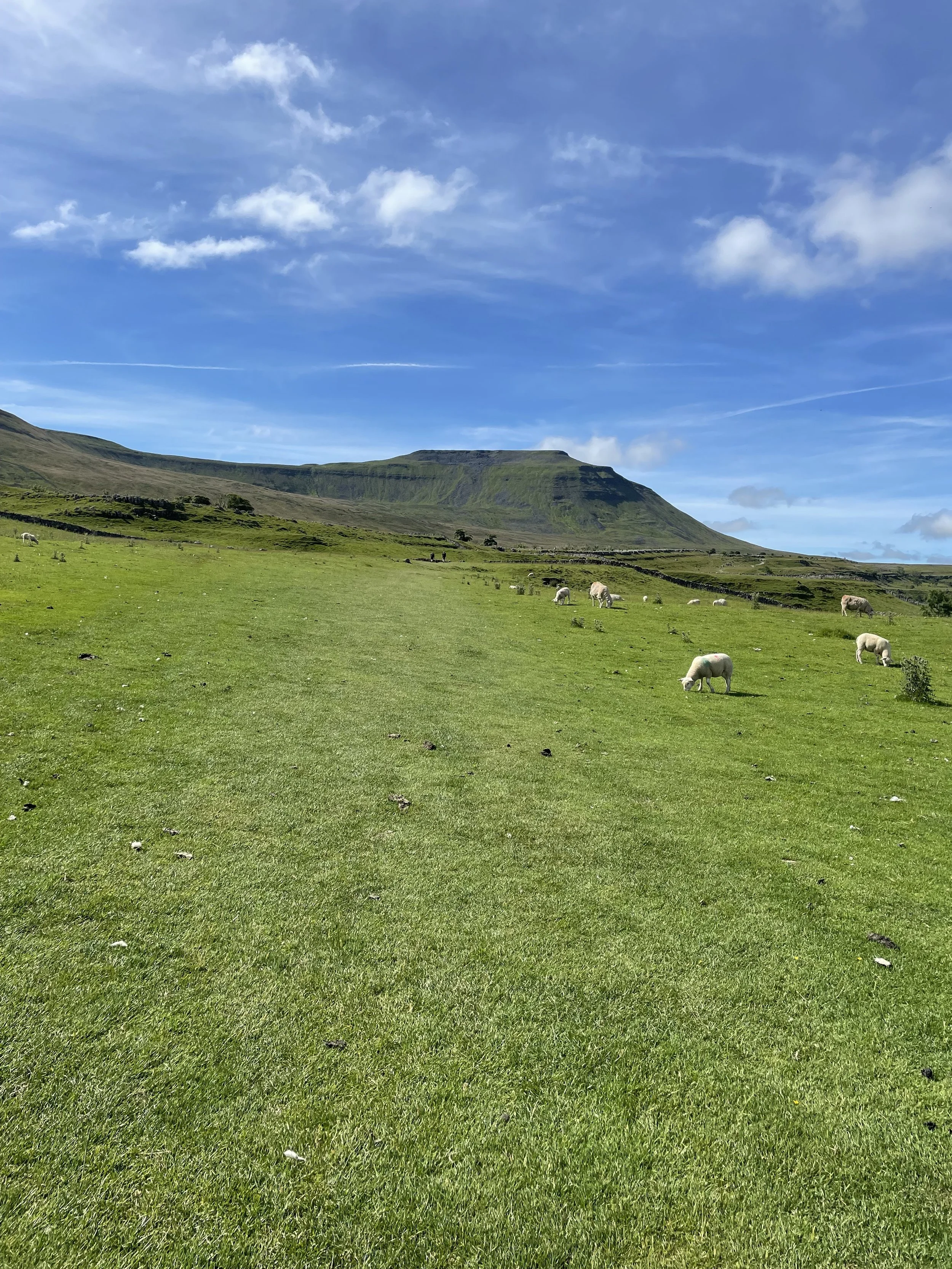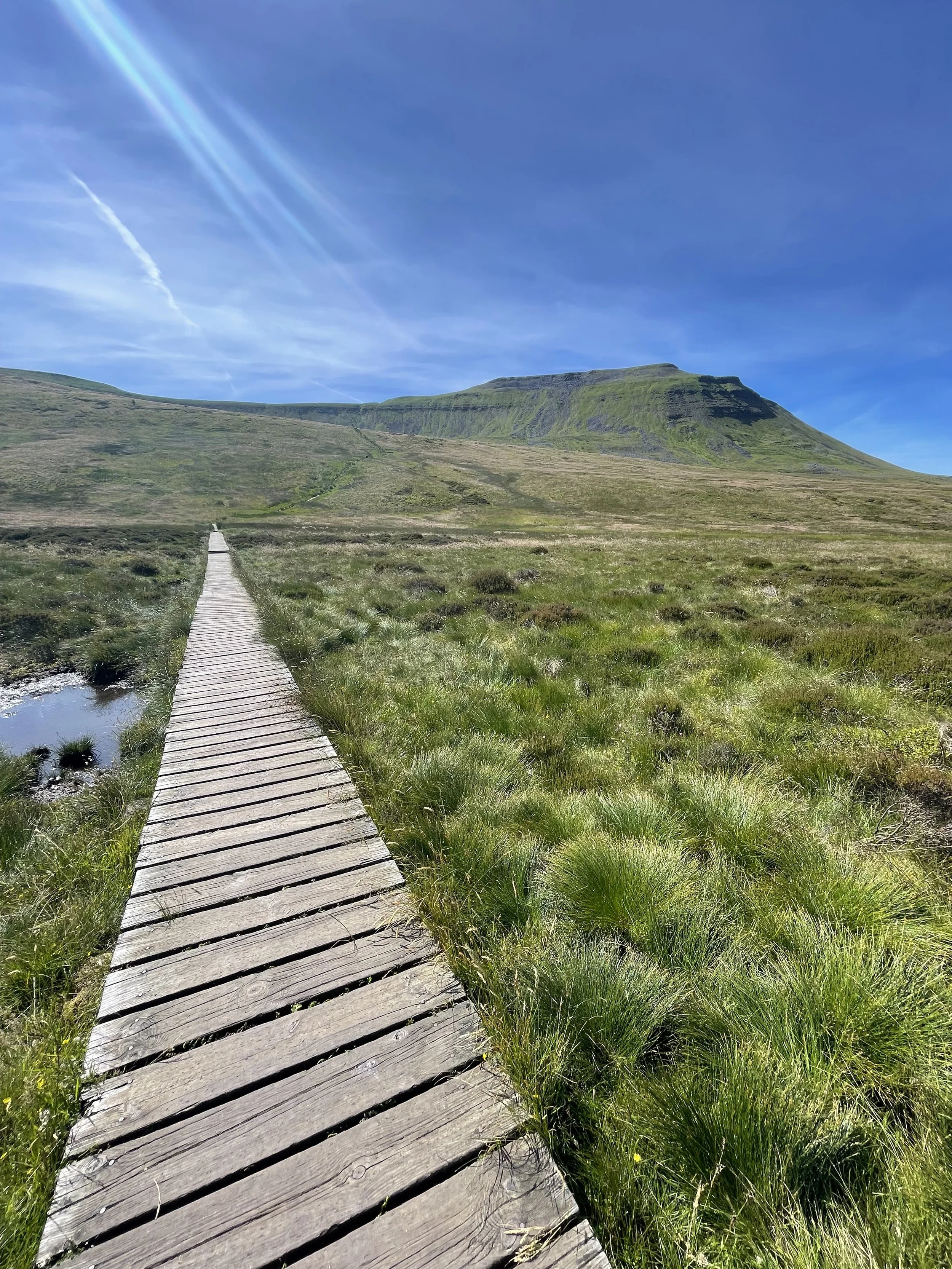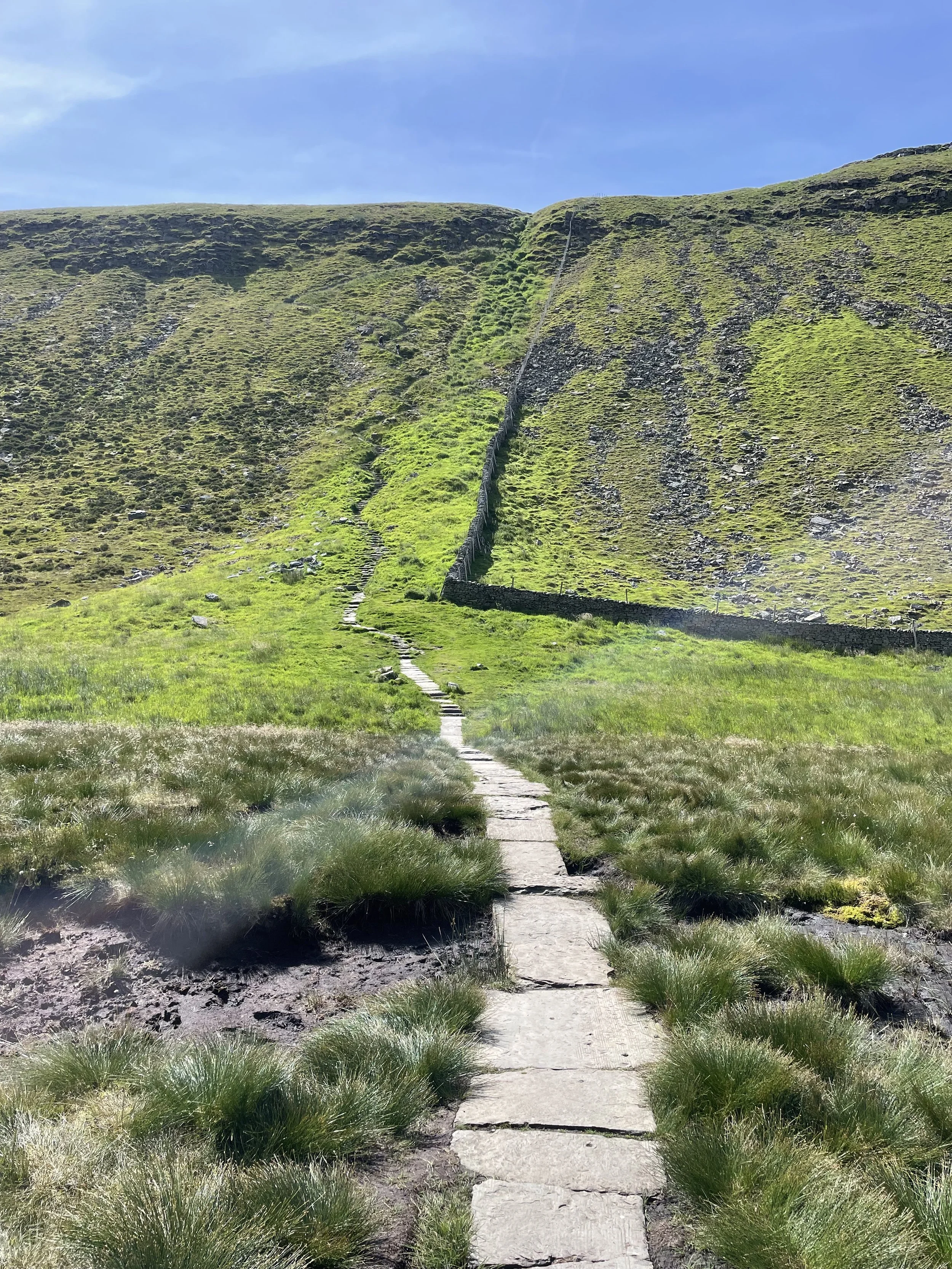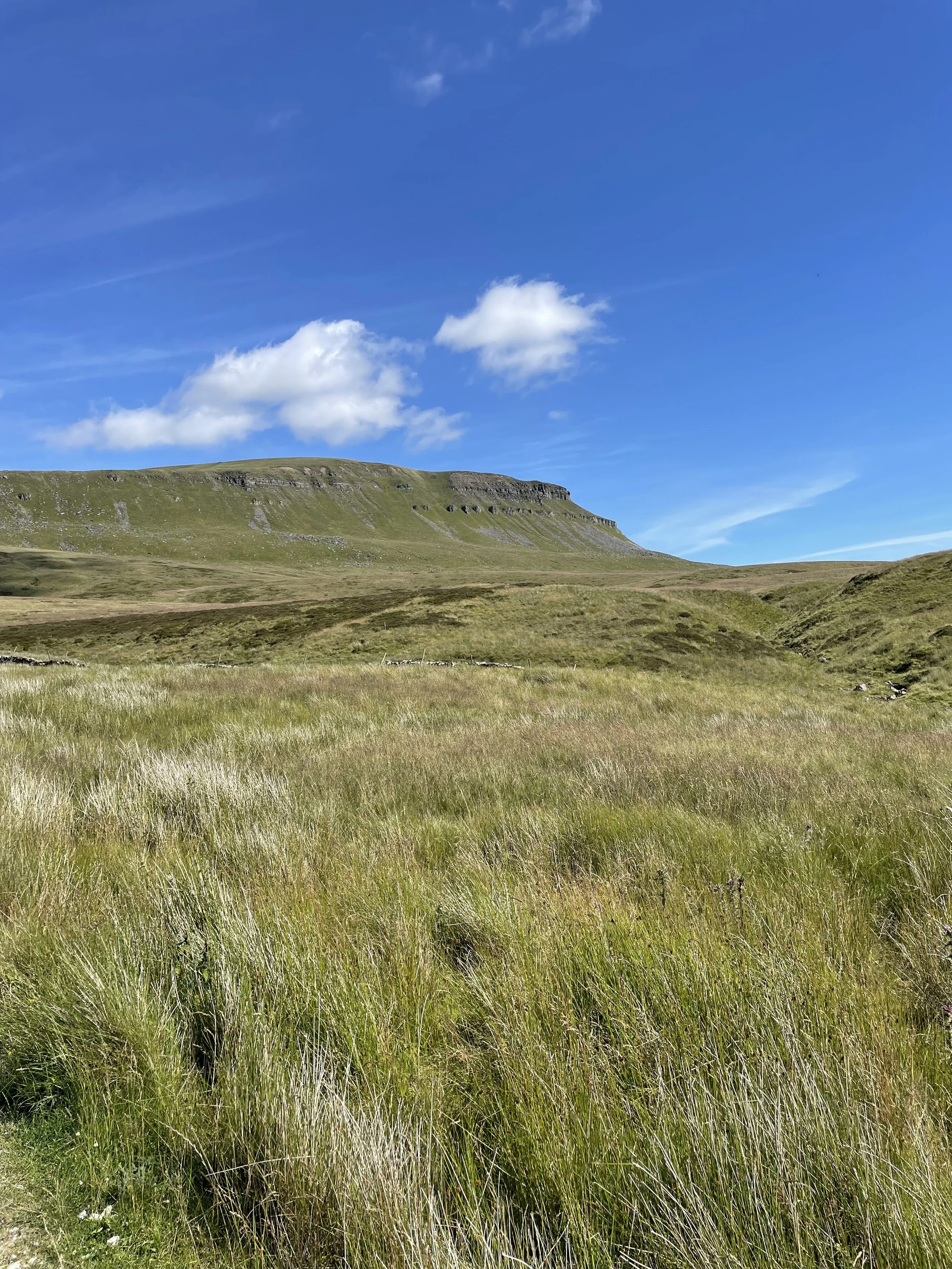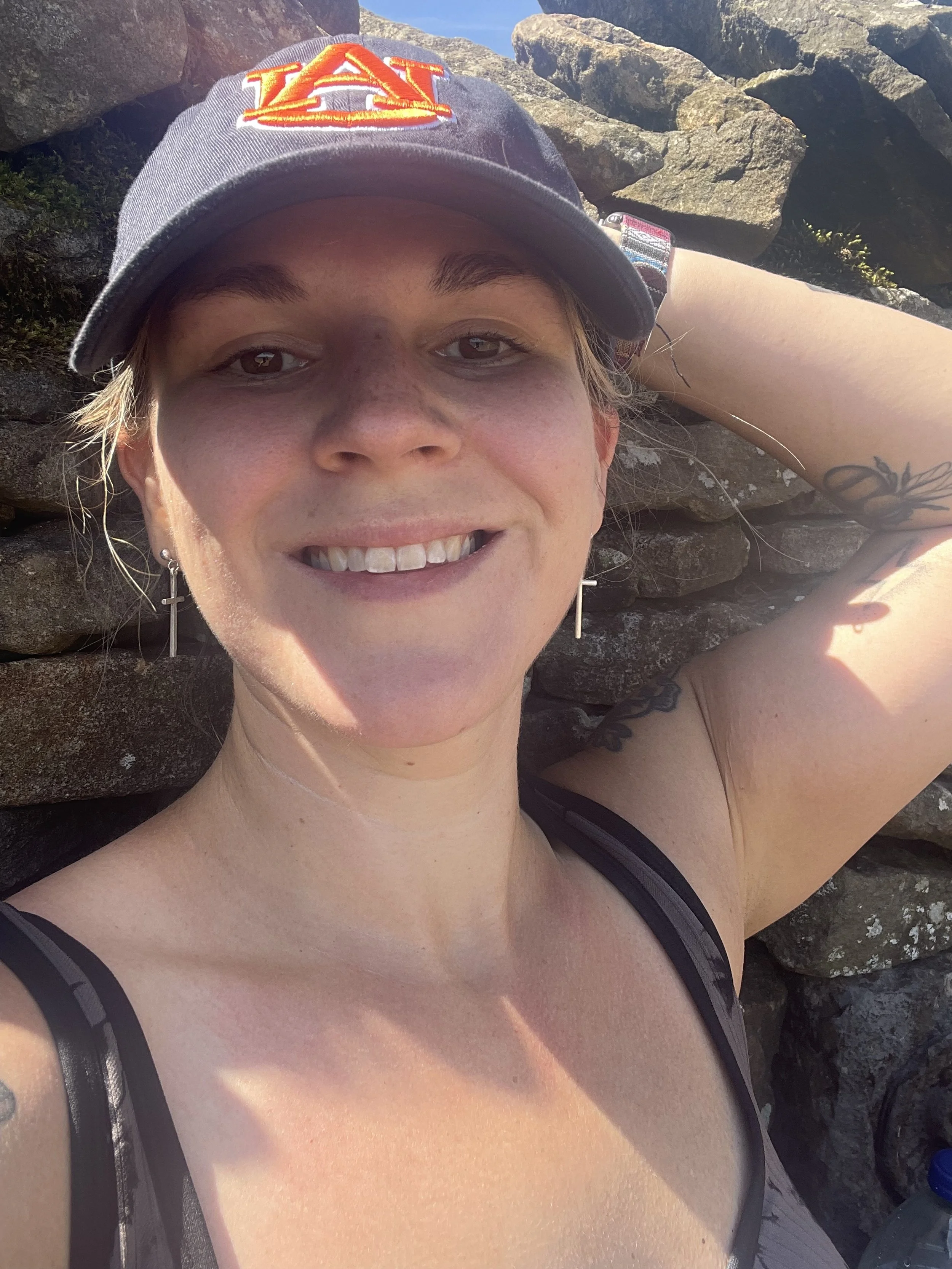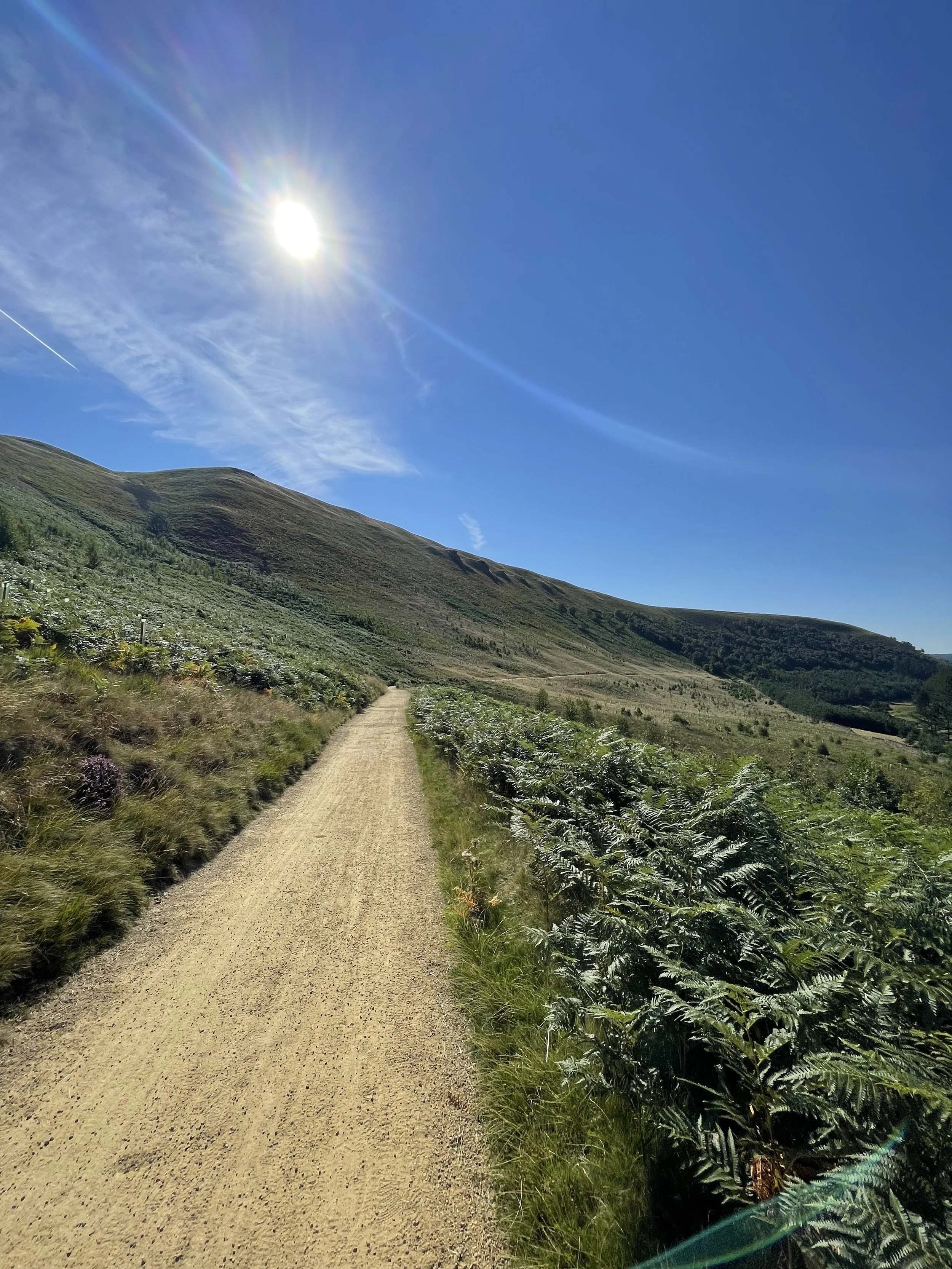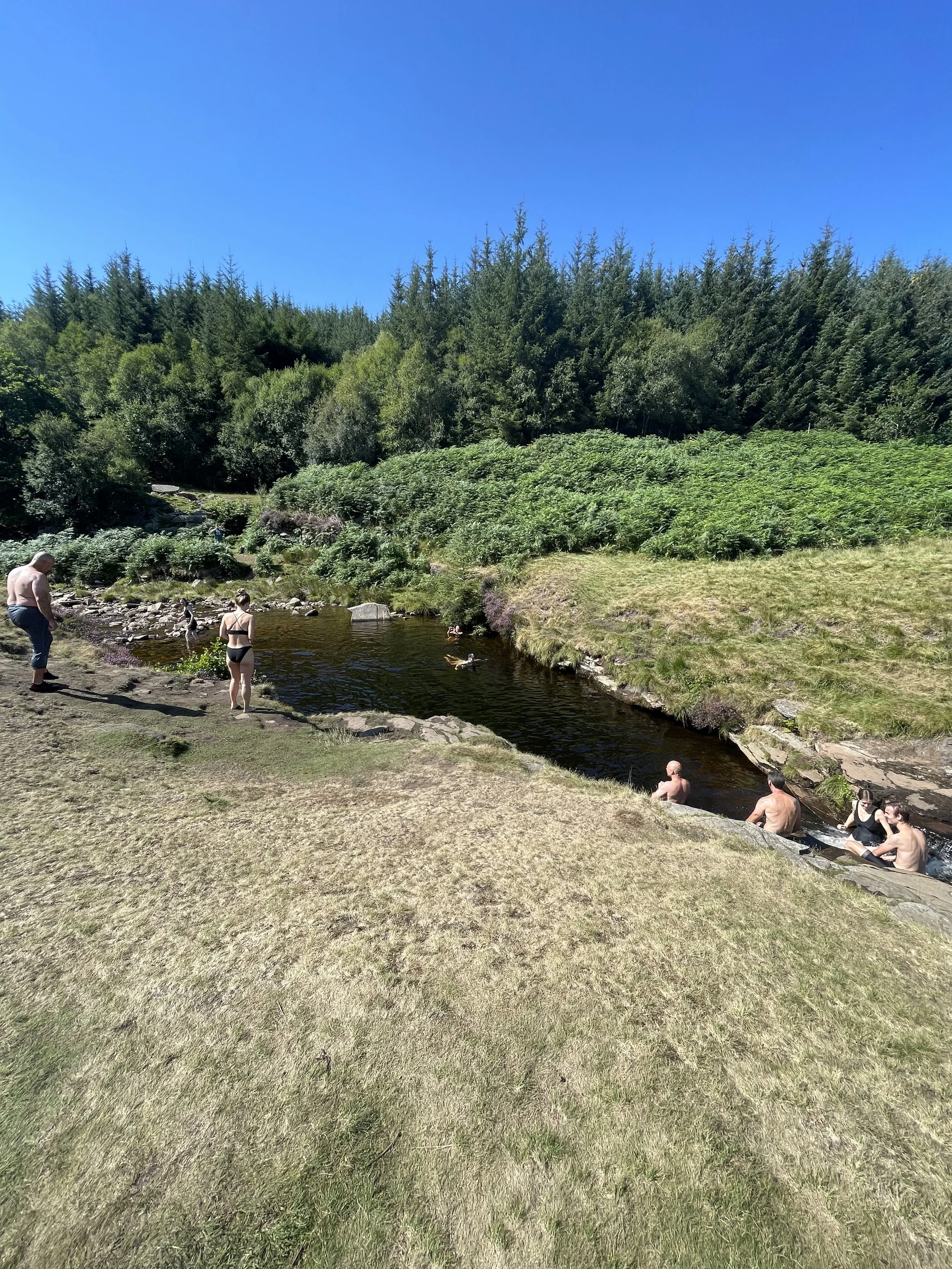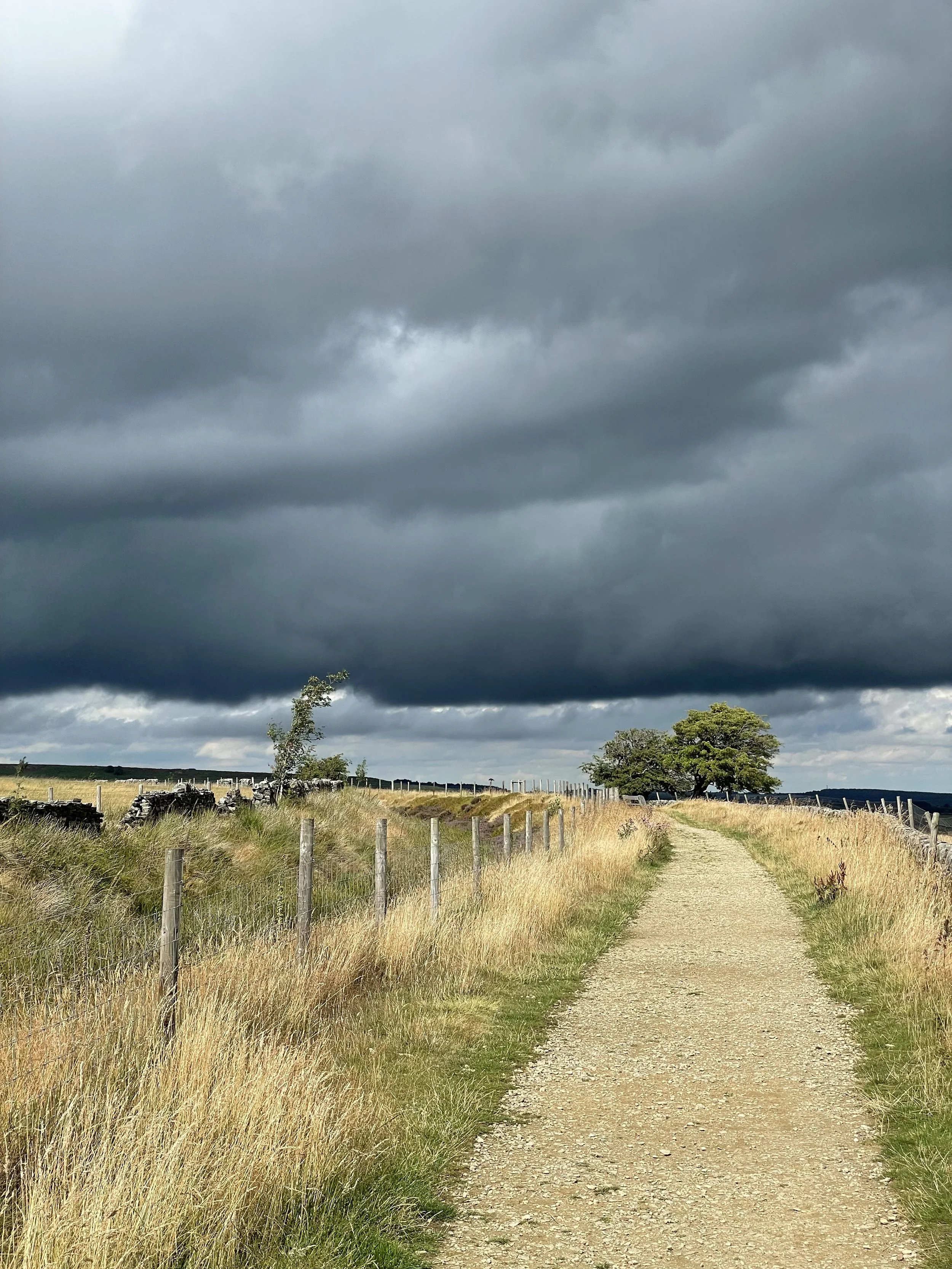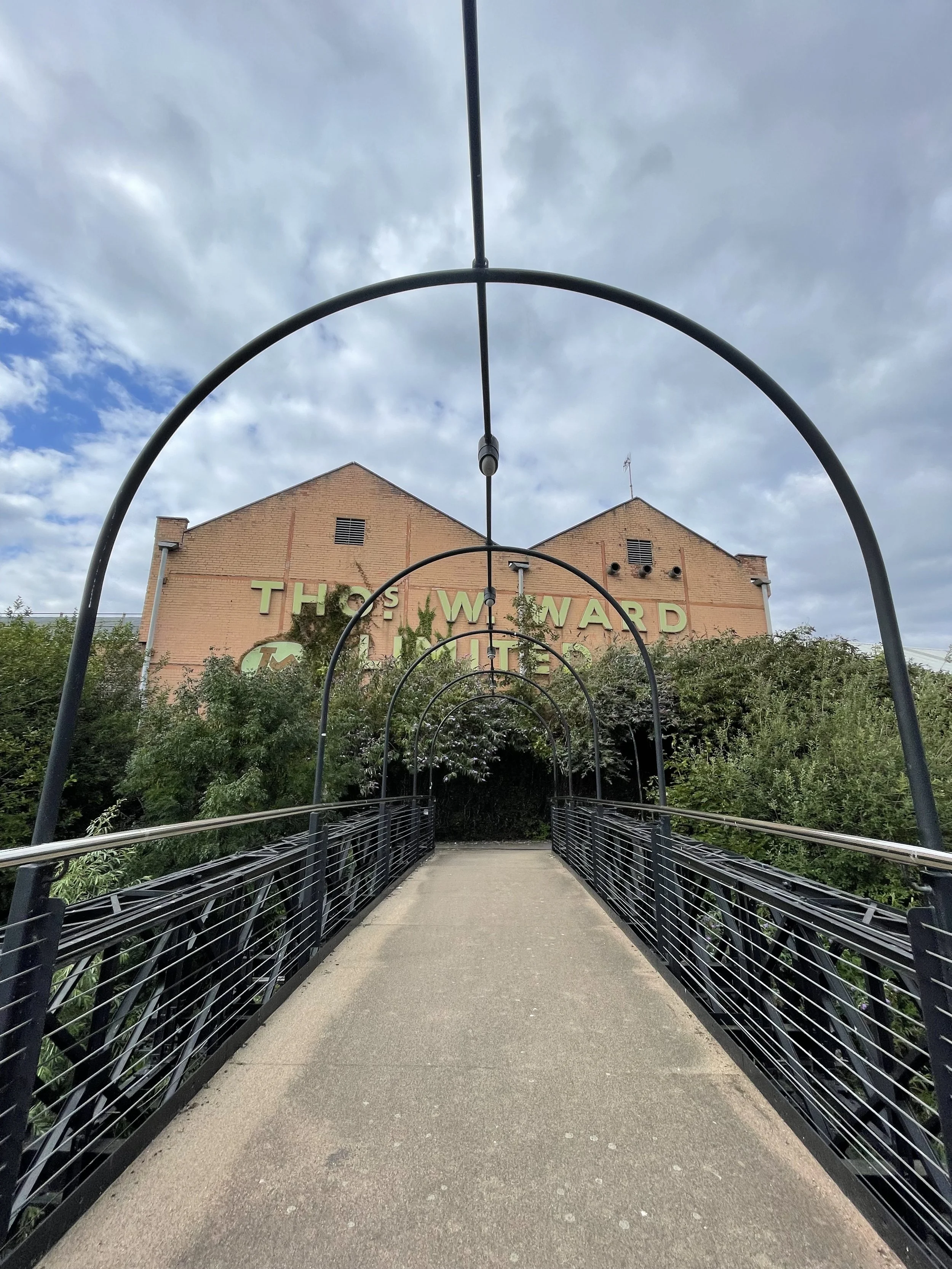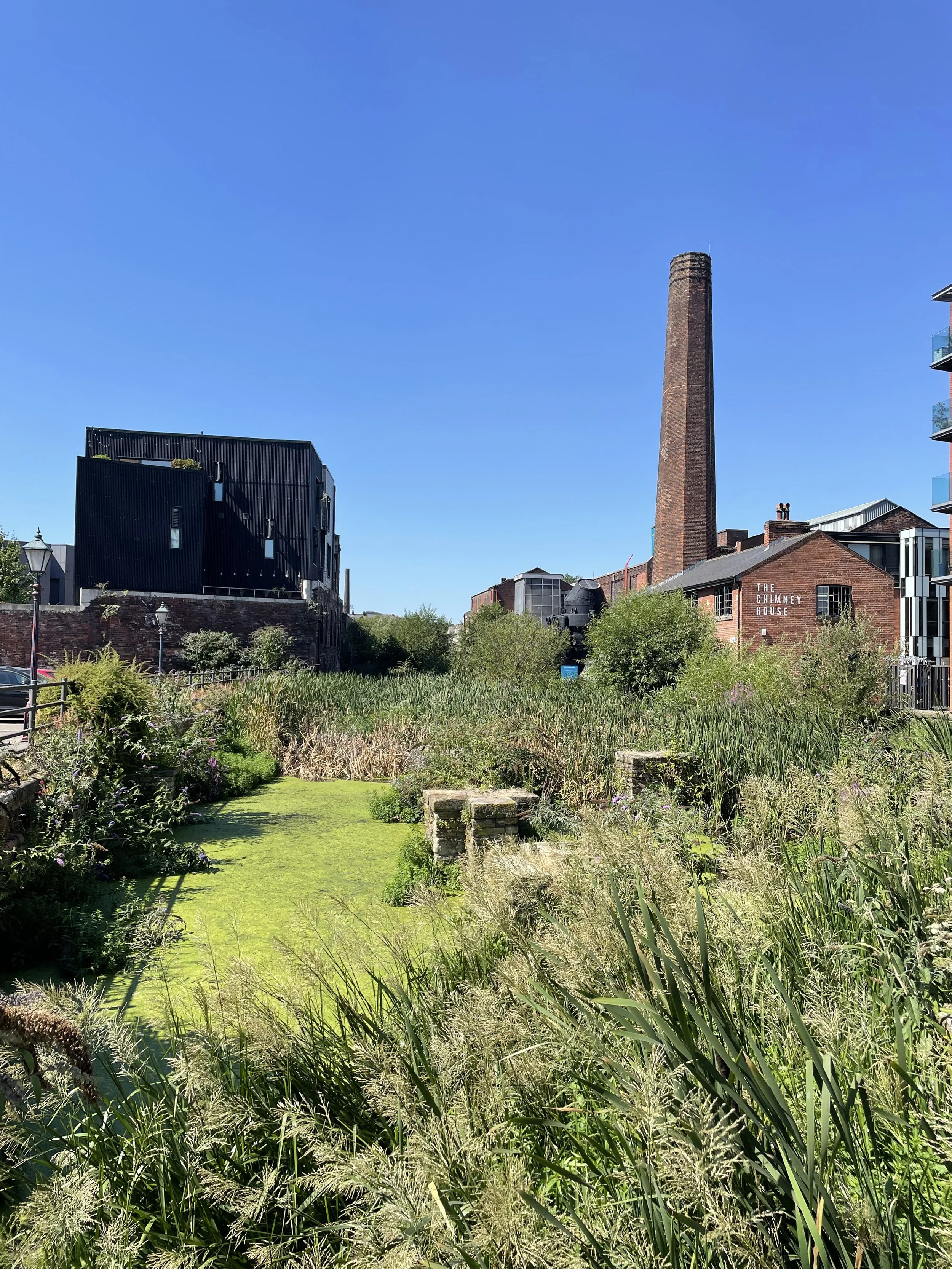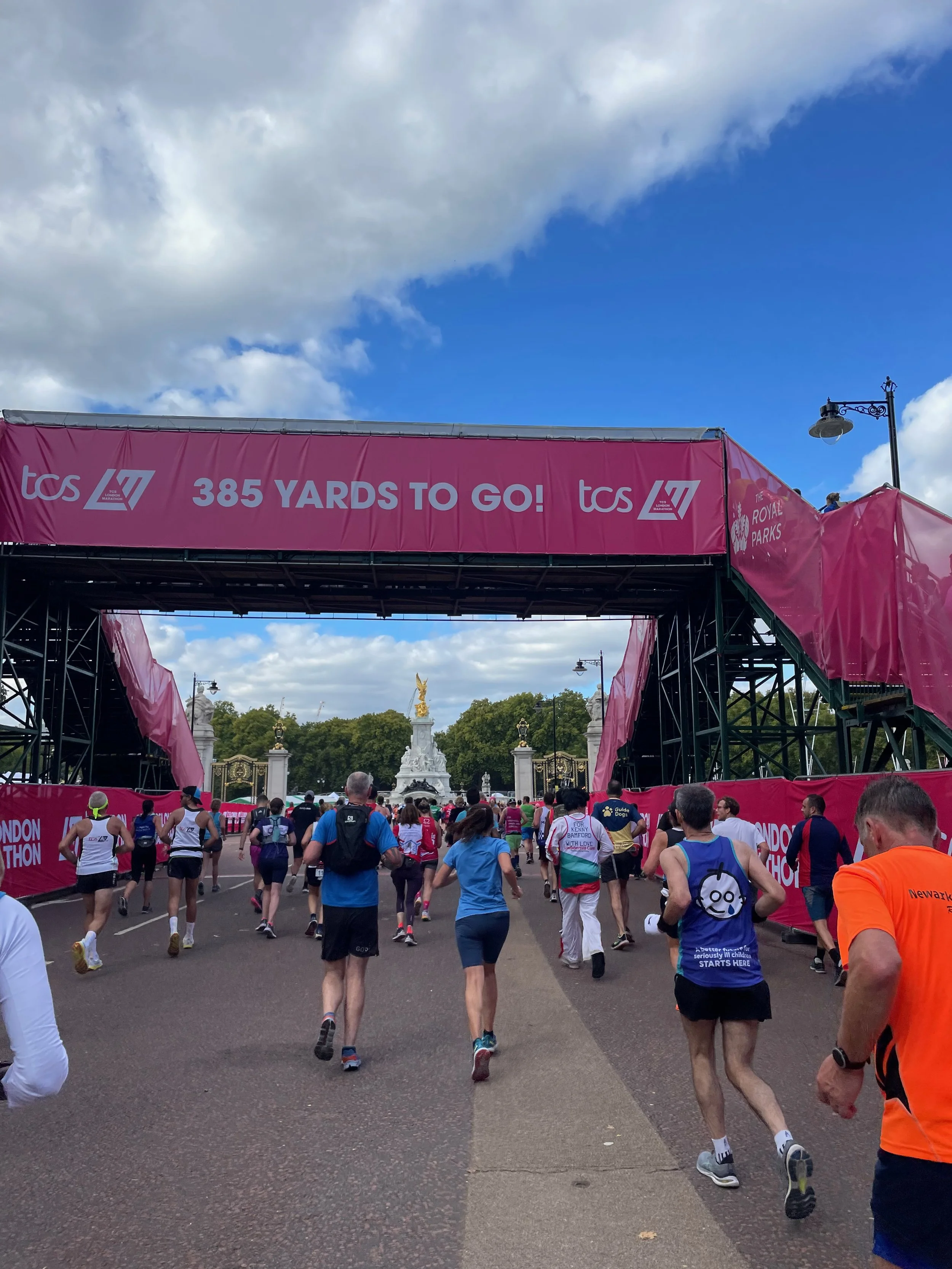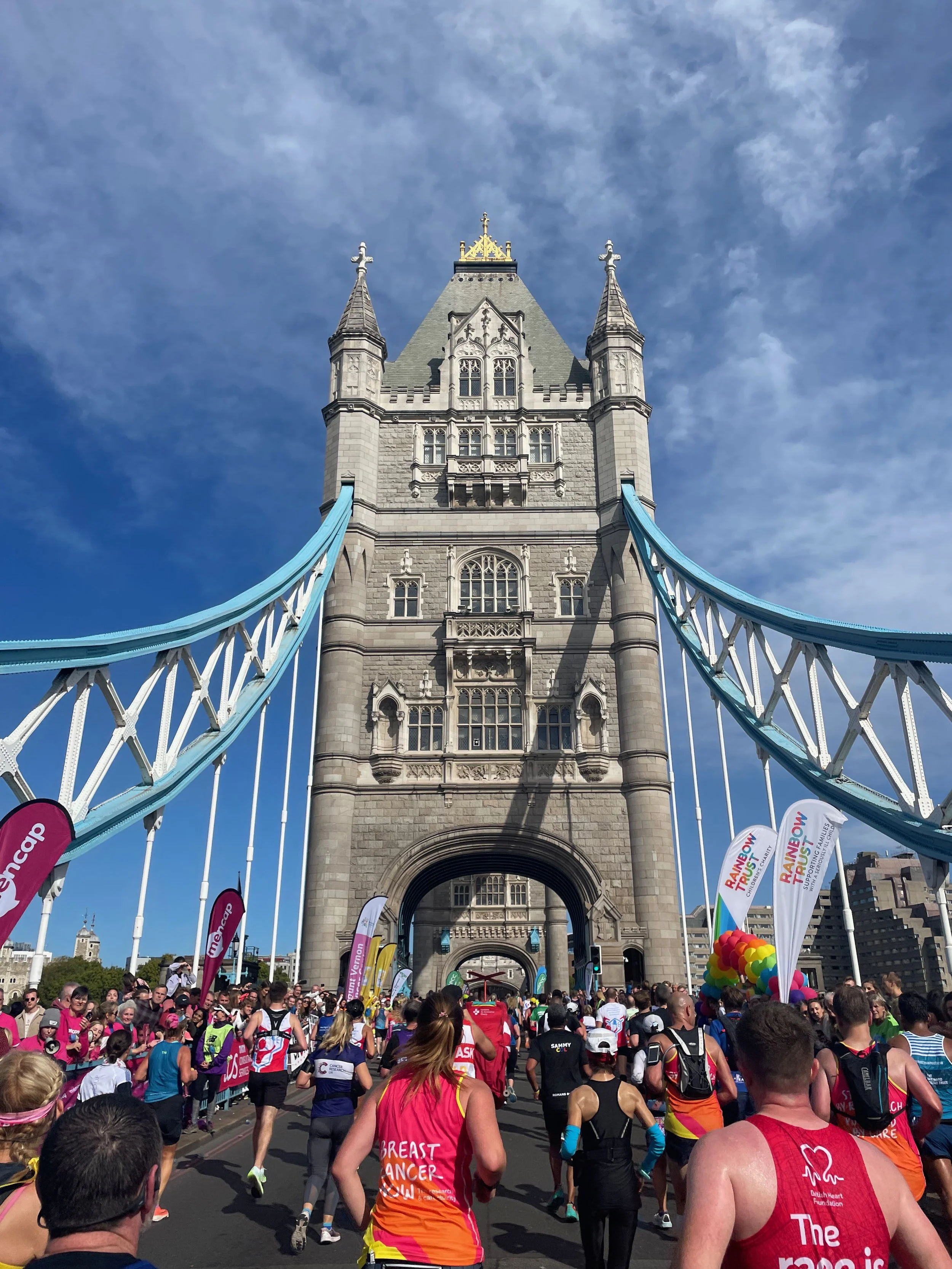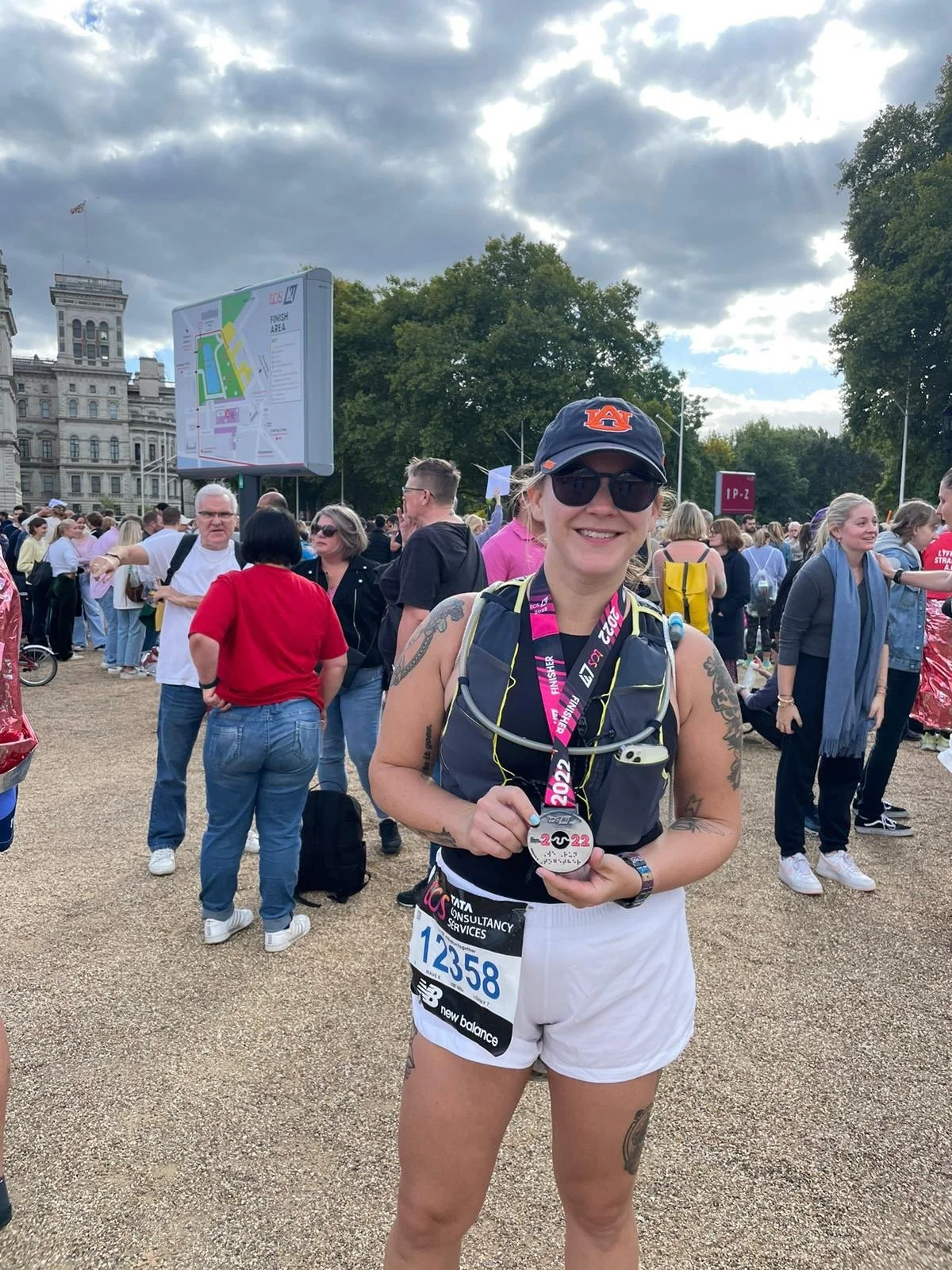Creative Act: Running the London Marathon
It was the beginning of August in 2022 and I had taken a few days off work. I was enjoying a staycation in my home of Sheffield—the sun was out, it was a beautiful warm day and I had booked in various nice things for myself: nails, massage, time for shopping, walking around the city and reading on park benches—a perfect day out! As I was walking away from the nail salon, I came across a man who was fund-raising for the London Marathon that was to take place on 3 October 2022, almost 3 months from the day.
I’d started developing a curiosity about marathons earlier that summer in June when I went out to tackle the Three Peaks Challenge in the North Yorkshire Dales, solo—a 24 mile walk, that takes you up and down three peaks, totaling 6,000 ft of ascent by the end. It was during that walk I started thinking: Here I am walking and climbing almost a marathon’s distance; what if I could run this distance (minus the climbing)?
So there I was stood on a street corner a couple months later, chatting about a marathon with a man whose name I never got. I asked him how he trained, how many marathons he’d done before—he spoke about it as if it was straight-forward: just get the miles in, be consistent. He said, “You know you should just sign up, there’s still charity spots left! What’s the worst that could happen? You’ve already walked a marathon’s distance in the hills, if you wind up walking part of this at least you can still say you’ve done a marathon.”
The over-achiever in me immediately got excited about the prospect of doing a marathon, his words took this passing thought I had before and crystallized it into a mission. He was right, though — the worst case was actually not that bad: even if I failed in my attempt, at least I’ll have given it a chance. That’s better than nothing.
I bid the man farewell, popped into a coffee shop and immediately started researching how to get one of these charity-spot positions he mentioned. I had no idea how marathons worked. I’d ran many charity-event runs in the past, but they were always sponsored by one charity and you just signed up. There wasn’t a lottery to determine who could get in or not. The London Marathon is quite different, the marathon itself offers a ballot for half of the 40,000 or so places, and then all the remaining places are divvied up between dozens of charities who then take applications for those spots.
I found that most of the charities had actually been over-booked, there were only a few spots left. I applied for 3 charities that resonated with me and got a call back from the second charity I found—Outward Bound Trust. I had a short call with them, and loved what they did so I agreed to fund-raise for them in exchange for a place in… The London Marathon!
Thus began my training.
Now it wouldn’t be fair to say I started from absolute zero and ran a marathon in three months — I am someone who loves working out. At the time I had a really great routine of working with a personal trainer a couple times a week, and was meeting up with a friend for some 5k runs once or twice a week. So I was in good shape, but endurance sport was completely new to me.
My mental model for training was that my body is a machine, it is a system—and systems can be designed, they can be manipulated. This was the framework I carried into my training, that running a marathon is a creative challenge for my body system. With that framework I thought simply about how I wanted my machine to perform. My criteria were to:
maintain a steady pace (10 minute mile, to finish marathon in 4hr 30min)
maintain steady energy
avoid injury
To achieve my goals, I did what I always do—I leveraged the creative process: Observe, act, learn, and adapt.
Observation
I spent the first week building up some knowledge on the subject watching YouTube videos about endurance sport, reading blogs, listening to a couple of podcasts and doing further research based on what I was learning.
I learned how to fuel my body with real food, how to take gels to keep my glycogen stores up, how to hydrate. I learned about rest and recovery. I spoke to other endurance athletes and absorbed the lessons they had learned — like what they wish they’d done better on race day, or how they fuel themselves.
Action
I built a training plan for myself based on multiple training plans I’d read online. I distilled what I’d seen down into a 3-month plan that would enable me to build up my distance, up to 20 miles, by doing a few runs a week with a long run on Saturday or Sunday.
Forming a baseline
At first, I did a training run completely fasted just to see how far I could go before my glycogen stores would deplete and my energy would run out. I managed about 9 miles on that first long run. I surprised myself with the distance I was able to run, but definitely felt I had reached my limit at the 9 mile mark, about 1.5 hours in.
Once I knew where my wall was, I read a bit more about fueling while running. Most of the marathon runners I was listening to online mentioned using gels—I learned there’s different types of gels, some you need with water, some called isotonic gels that you don’t need with water. I decided to buy some isotonic gels and tested them on on my next practice run.
Fueling my run
After finding my 9-mile baseline, I decided I would target 12 miles on my next long run and would fuel myself with gels. Based on a number of reviews and commentary I’d heard and read online, I decided to pace my gels by taking one gel at 45 minutes, then one more gel every 30 minutes until the end of my run.
I set off on a 12 mile run in the beautiful Peak District National Park, around Derwent Dams, down to slippery stones and back. Its paved path along the reservoirs that’s got just enough hill to challenge you, but a few long stretches to help keep you moving as well. Slippery Stones, down at the end, makes for a fantastic cold plunge if you can pack and arrange yourself for a quick dip at the end (followed by a walk, or run, back to Fairholmes car park).
In my first run taking those gels, I was able to push to the 12 mile mark on that first trial run with gels. I felt a little achey after that first long run, but I could tell the gels had made a big difference. I was achey but I didn’t feel depleted. Win!
All of my training runs from that point included gels in that exact order—one gel 45 minutes in, then one gel every 30 minutes.
Fueling myself outside of training
Throughout my training, I played around a bit with my diet; I really wanted to optimize for the simple metric of ‘feeling good and having energy to keep going.’ My training runs would typically start mid-morning, so a good breakfast mattered. But I was conscious of how food can be healing, also; so I stayed away from foods that can increase inflammation or cause energy crashes. No processed foods, very little sugar, lots of protein, vegetables and good starches.
I also got obsessed with protein. I set my sights on getting in about 100 grams of protein per day. This helped me maintain my training schedule, which was intense given the short amount of time I had to prepare for the marathon! And honestly, centering my diet on protein is one thing that has stuck with me after the marathon. I don’t know the science of why, but I know the more protein I get the better I feel, sleep and recover.
Discovering great routes
The best thing about training for this marathon was discovering my city, Sheffield, in entirely new ways. You get tired of running the same route every day, and the distances I needed to cover meant I quickly out-grew my old trusty routes.
Sheffield is near the Peak District, and my favorite runs became the ones where I was either running out of Sheffield toward the Peak District (until I could see some peaks glimmering back at me); or driving down to Fairholmes to run around Derwent Dams.
I was training in the summer, and quickly discovered how healing a cold dip is after a long run. So, I fashioned a few of my longer runs around Derwent Dam so that I would start at Fairholmes car park, run the full loop of Derwent almost back to Fairholmes (about 10 miles) and then I’d run 3 miles right back down to Slippery Stones for a cold dip in the river. It took a little ingenuity to get my outfit and kit packed well enough to enable a post-run dip—I wore my bathing suit under my clothes, and packed a small microfibre towel in my bag. But it was such a treat! I could get 13 miles in, have a cold dip, then a calming walk back to the car.
Learnings and adaptations
Rest and recovery
My biggest challenge during my training, and one of my biggest takeaways, was with rest and recovery. I am a naturally restless person, I have a lot of energy and can hardly stay still. I listened to other endurance athletes adamantly advise 24-48 hour recovery times for themselves, and I think during all of my training I struggled to ever get any more than 24 hours of rest per week. I could feel creeping aches threatening to force me into rest, but I managed by taking one day completely off each week, and shifting some of my other active days to gentler activities like yin yoga or pilates so that I was allowing myself to get some movement to ease my restlessness, but in a way that was nurturing rather than demanding on my system.
The lack of rest threatened me at different points, with my knees and hips aching in new-found ways, sometimes waking me up at night. But active resting—going for a walk, getting a massage, using my Theragun, foam rollers and mixing in those gentle activities like yoga and pilates served me well.
Posture and alignment
Running long distances is like getting a multi-dimensional scan of your entire body. You feel everything, and for me there was always a point after which I’d been running for a while where I could feel how messy my posture can be. Its like some part of my body would start dragging behind the rest, and if I didn’t consciously correct my posture I’d start feeling a pain start to grow. A big reason for the strength training I had been doing before was to correct my anterior pelvic tilt, and it was working; but the marathon training let me know I still had a ways to go.
By the time I got to the marathon I had a couple of simple tactics to help keep my posture and machine aligned, and to avoid injury:
Checking in with my core, hips and waist to make sure they felt aligned—
this usually meant engaging my lower abdomen and tilting my hips up, to ensure I wasn’t collapsing my lower back
No twisting—
because my training runs were often on roads with traffic or pedestrians, I needed to keep an eye out when crossing streets or paths; but I found that whenever I twisted my body to check those paths, I could feel a slight pull in the muscles in my legs
I don’t know why or what the science is there, but I did know that if I wanted to check side-to-side, especially after I’ve been running for 10+ miles, that I had to consciously turn my entire body in the direction I needed to check—no sudden twisting!
The marathon
By the time the marathon came around, I was ready. I had been diligent in my training leading up to the marathon, and felt confident I would achieve my goals of running the marathon in 4hr 30min, maintaining a steady energy throughout. And by the time the run came around I felt better about my posture and wasn’t too worried about injury.
On race day I started the morning with an espresso and a banana. I stretched, I prayed, then the race started and I set off. I ran in the same gear I had trained in, from shoes to earbuds to playlist and cap. I took some ibuprofen two hours before the race and another dose about 2 hours into the race to help tone down any inflammation in the muscles in my legs. I took in one gel just before the race started since I’d had such a small breakfast, then followed my schedule for gels as normal: one at the 45 minute mark, then one more every 30 minutes until the end of the race. I had 1.75L of water in my camel pack, too.
The London Marathon is one I’d recommend to any marathon runner or marathon-curious person. London is very flat, and the route is truly alive. The crowds along the route are just amazing. There was hardly a spot where there weren’t people cheering, playing music and of course handing out water and snacks for those who needed it. Did I mention its flat?
Pacing oneself on race day is a big challenge in itself. The energy of the route and the buzz of running with a herd of people encourages you to run faster than you normally would. And its easy to think “why not?” But fortunately, earlier races taught me to consciously slow myself down so that I don’t burn out or injure myself. That bursting energy you feel at the start is something you’ll be crying out for at the end! Best to conserve it.
I held steady, found my pace (10 minute mile) and stuck with it. I only slowed down to a walk once when taking in a second dose of ibuprofen two hours into the race. Otherwise I held steady. I was constantly checking in with my systems—checking my hips, engaging my core, relaxing my shoulders. The bulk of the race was fine, it felt kind of easy. But once I got to the 20 mile mark, my hips started aching, and my leg muscles were starting to twinge. In that last stretch, I felt like my gels weren’t working any more and I was depleting but I kept finding another mile in me.
By the end of the race, the work became more psychological than physical. It was seeing those mile markers on the road and then having to coach myself through, “just 5 more miles, easy;” then, “just 4 more miles, you’ve got this;” and so on. The last 6 miles were a blur. I hardly remember the sights or anything that went on around me, my focus narrowed in on keeping one foot in front of the other, maintaining a good posture and cheering myself on, “This is nothing. You’ve got this. You’re so close.”
In the end, I did it. I finished the marathon in 4hr 36min (only 6 minutes behind my goal). I maintained my energy throughout by fueling myself and keeping a steady pace. And though it definitely took a toll on my body (and my hips especially!)—I finished without injury.
Key takeaways
I made myself into a marathon runner, I designed myself into that. But the work designed me as well: it showed me new possibilities, heightened my body-awareness and taught me a few lessons . Here are my key takeaways:
The body is a system.
It is possible to do extraordinary things with my body, if I am consistent in my training and fuel my body well.
I can ‘program’ my body.
The mind is also a system.
It is possible to persevere through difficulty, even if all I have is my own inner voice telling me to keep going. I am strong enough for me.
I can ‘program’ my mind.
Challenges and stress make us strong.
We are like trees: as we grow and exist, we face seasons and weather that might wilt our leaves or break our branches; but each season we grow back stronger and more fruitful.
Challenge and stress are temporary, like the storms that shake the trees.
It’s OK to walk.
The will and want to achieve can lead us to do great things, and its worthwhile to do great things every now and then; but it isn’t sustainable to always be going for gold. The body, the systems, simply need to rest—to slow down.
It’s always a good idea to go for a walk.
What creative acts or challenges are you taking on right now? How might the creative process help you achieve your goal?
I wanted to share my story of running the marathon to remind you that the creative process can be applied to almost any challenge or problem, it’s not just for creating art!
Creativity is like a muscle; with practice and repetition, you’ll strengthen it; and I can assure you that if you practice and surrender yourself to this process, you will make yourself proud. It feels so good when you continually show up for your creative self, take action and make an impact.
If you’ve read this far, thank you. I appreciate you being here, it means a lot.
If you enjoyed this, please share it with your friends! I’ll write again soon with more insights on creative living.
Want to see what I’ve been working on? Follow me on Instagram, or check out my website for a catalog of completed paintings. And be sure to subscribe, below!
